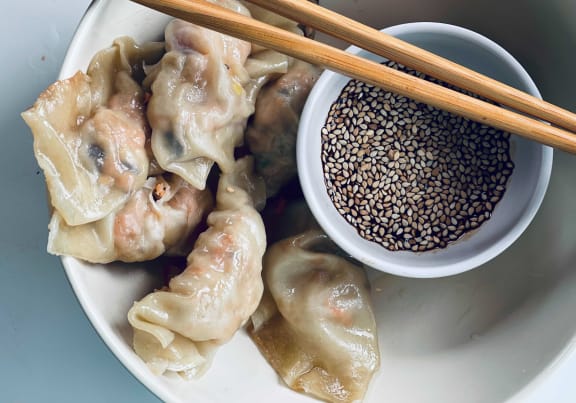Meaty yet lean and full of flavor, homemade sockeye salmon dumplings are infinitely tastier than any frozen salmon gyoza you can find at the store. Of course, they’ll require some extra effort to make — nothing a beginner couldn’t handle, but definitely more labor-intensive than your average meal. So, enlist your favorite sous chef and get to work!
While ground sockeye salmon has a gamey, salmon-forward flavor in relation to other wild-caught fish, it actually makes for a relatively mild protein to use in dumplings. You’ll want to dress it up with roasted sesame oil and rice wine vinegar, apple cider vinegar, or sour kimchi juice if you have a jar of that on hand. Cabbage and onions add easy flavor and texture to the filling. You’ll want to toss them in a bit of sea salt to coax out some of the moisture before cooking them so that the filling doesn’t get soggy.
In addition to the veggies, we highly recommend using rehydrated shiitake mushrooms in your dumplings, as they are especially meaty and add lots of umami to the mix. (Just soak dried shiitakes in hot water for about 15 minutes, then wring them out; you can reserve the mushroom water for another use.) When sauteed in oil or butter, the mushrooms will soak up the fat, adding some richness to the filling. Ginger, garlic, and scallions complete the aromatic veggie portion of the filling, which you’ll season with soy sauce.
As for the dumpling wrappers, look for round ones in the refrigerated aisle of the grocery store or at your local Asian market. Honestly, homemade dumpling wrappers have better texture and are easier to seal, but premade wrappers will save you so much time and energy in the kitchen that it’s worth taking a store-bought shortcut.
Don’t forget the dipping sauce! A salty-sour-sweet-and-spicy mix of soy sauce, rice wine vinegar, sugar, and a Japanese chili flake called togarashi is a cinch to mix together and covers nearly all the bases in terms of your taste buds. Toasted sesame seeds add a pretty flourish and a little extra crunch to every bite.






